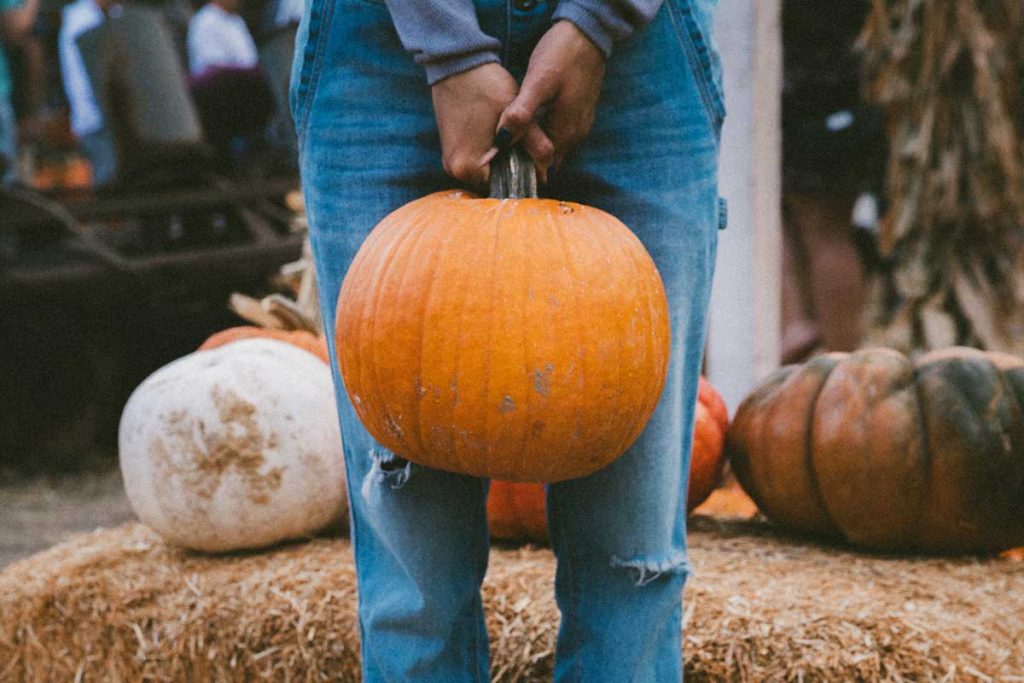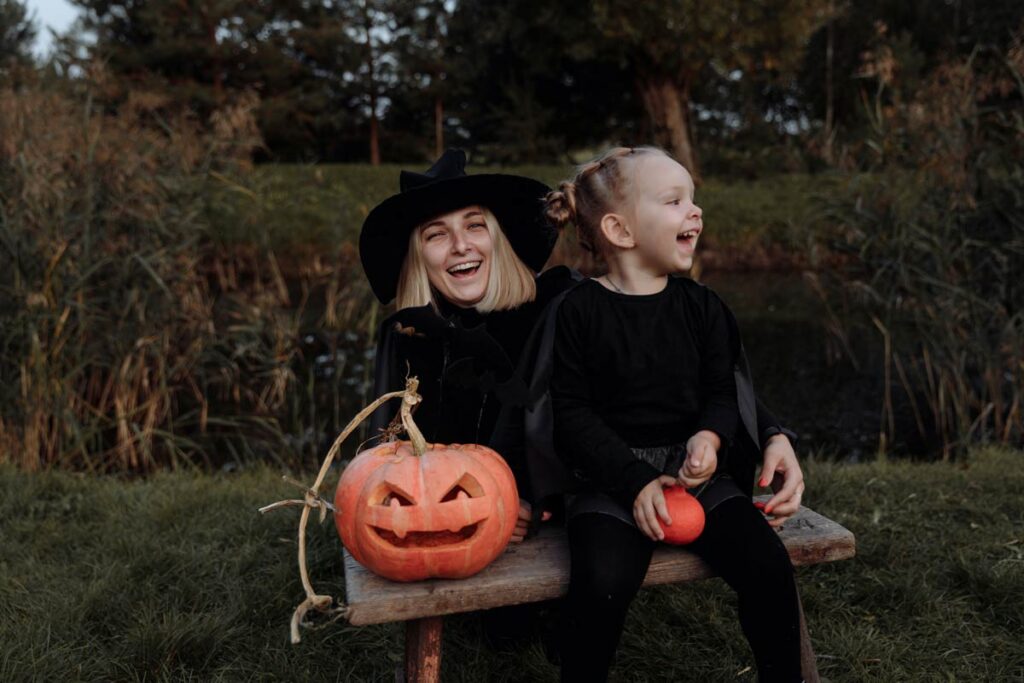The spooky season, known around parts of the world as Halloween is almost upon us at last! Whether you mark Halloween by carving pumpkins, watching a scary movie, or partying with friends, this frightful festival is one of the highlights of the year.
Whilst modern-day Halloween is more associated with candy, costumes and pumpkins, it’s actually an ancient tradition with pagan roots in the Celtic ‘Samhein’. It’s based on the belief that All Hallows Eve is the night when the veil between the living and the dead is lifted. Meaning that spirits roam amongst us…
Beginning in the West, many countries have since adopted Halloween traditions or have their own frightening cutlural festivals with some spooky similarities. Keep reading to find out more…
P.S. Find 10 spooky motifs and themes with Halloween sayings here (or use the free quotes available in the app direct!)
Contents:
Celebrations in:
Which countries celebrate Halloween?

So which countries even celebrate Halloween on October 31st? Halloween has been celebrated in Canada, the USA and the Dominican Republic basically ever since it was brought over with Scottish colonizers, gaining popularity in the 19th century and early 20th.
In lots of places around the world, Halloween and the celebrations often associated with the USA, like trick-or-treating have has been growing in popularity since the early 2000s. Among these are Greece, Germany, Japan, Hong Kong, the Dominican Republic and more.
However, many countries have their own traditions for All Souls’ Day. Read on to find out what!
Halloween Around the World: 8 Terrifying Traditions…
#1 The Celtic Countries
Halloween traditions around the world are thought to have originated in Ireland as part of the Celtic festival Samhain, pronounced Sow-in. This was a day that marked the end of harvest and the start of the winter months; commemorating the start of the Celtic New Year on November 1st.
Outlander fans will be aware that this holiday is associated with old magic and folklore. Hundreds of years ago, across Ireland, the UK, and northern France, pagans prepared for the night when spirits are able to enter the living world.
The blurring of boundaries between worlds naturally brought with it ideas of magic. Fortune telling games are still played today in the form of ‘fortune telling cabbage’ for instance, remnants of a more magical time. It’s likely that magic was used in an attempt to appease the evil spirits and demons that were thought to walk amongst the living on this all fated night.
#2 The USA
Whilst many of us are big fans of Halloween, the holiday is relatively new in the States. It was brought over from Catholic Europe by Scottish and Irish immigrants in the 19th Century. Whether it is a family day out to a pumpkin patch, carving jack-o-lanterns or trick or treating, there is so much to see and do – take these 5 thrilling Halloween activity ideas, for example.
Now second only to Christmas, Halloween in North America is predominantly secular. It promises to be more fun than frightening! Many Northern Americans choose to decorate their homes and wear costumes for this horrifying holiday.
It doesn’t matter if you wear a spooky or beautiful costume – Halloween is an event where everybody takes a lot of pictures. Why not be prepared to take the best pictures? Read these cool Halloween photography tips!
#3 Mexico

Originating thousands of years ago in Aztec culture, Día de Muertos is a celebration to honor loved ones and ancestors that have passed onto the other side.
The festival is premised on the belief that the Gates of Heaven open at midnight on October 31. Lost souls of children can then be reunited with their families on earth. Then on the 2nd of November, it is believed that our departed adults join us for this celebration of death. To honor those that have passed over, ofrendas (or altars), are created, food is offered and candles and incense burned to aid family members in finding their way home.
#4 Philippines
In some parts of the Philippines, children celebrate Pangangaluluwa on the 1st of November. Children and young people roam the neighborhood, offering songs in exchange for food, candy, or money. A practice not related to – but slightly reminiscent of – trick or treating, the songs are supposed to aid deceased family members in their journey to the other side.
Now not as popular as it once was, Pangagaluluwa is a tradition that continues in the provinces and rural areas. The modern-day practice of this centuries-old superstition is now more similar to Western trick or treating, with children often choosing to dress up in scary costumes for their musical journey around the neighborhood.
#5 Cambodia
Phchum Ben is a 15 day religious festival in Cambodia that also celebrates the afterlife. The word, ‘Ben’, means ‘to collect’ while ‘Phchum’ means ‘to congregate’. This festival is seen as a time when families get together to remember and celebrate their loved ones. Food is provided for the wandering spirits, with sweet sticky rice being particularly popular. A time to visit temples and pagodas to pay respect to ancestors or to spend time with elderly family members, this is one of the most important events in the Cambodian calendar.
#6 Guatemala
Guatemalans also celebrate the Day of the Dead. But in some parts of the country, they do it in a very unique way, with parades and kites containing messages for those that are deceased. The giant, beautifully colored and intricate kites are often more than 40 feet wide and just as high. It is believed that the higher they fly, the closer the messages get to reaching the dead. The 3000-year-old Mayan tradition is a truly impressive spectacle to behold!
#7 Romania

Count Dracula is based on the gruesome tales told about Vlad ‘the Impaler’ Tepes. So Bran Castle in Transylvania, a place Vlad was thought to be imprisoned for a time, provides an excellent setting for All Hallows Eve. The castle inspired Bram Stoker’s bloodthirsty tales and is rumored to be haunted with the spirits of those tormented by the Voivode of Wallachia.
But although there are parties and events, Halloween on the 31st of October is not traditionally celebrated in Romania. Instead, similarly spooky festivities lie on the eve of St Andrews. On the 29th of November, it is believed that wolves gather around, and spirits come to surface. It is also thought to be an auspicious night that is particularly well-suited for spells and magic.
#8 China
In China, Halloween as such is not celebrated by most people, except by Western immigrants and English teachers. However, they do have several traditional days of the dead that have some similarities to our favorite spooky tradition. That includes the Hungry Ghost Festival, the Qing Ming Festival, the Double 9th Festival, and the Spring Festival. The seventh month of the China lunar calendar is ghost month, where the dead are released from hell to visit Earth. Such festivals of the dead in China are hundreds of years old. Many believe you should take precautions against evil spirits, too, as well as honor loved ones who have passed away.
Ready for your own spooky Halloween party?
Are you ready to start celebrating with one of these Halloween traditions from around the world, you are lacking ideas? Here are 5 gory Halloween activity ideas for your perfect horror night.
If you’re partying virtually this year, make sure to take some ideas from this article on staying social while you socially distance to help you out!




Comments are closed.